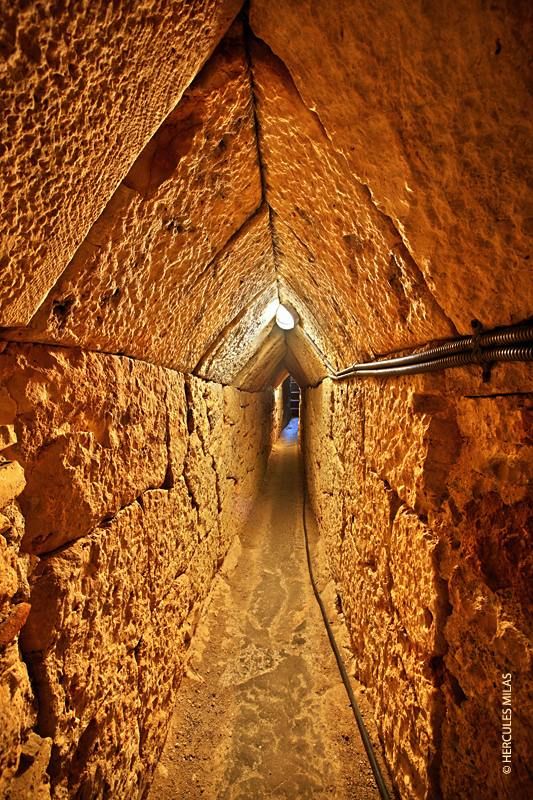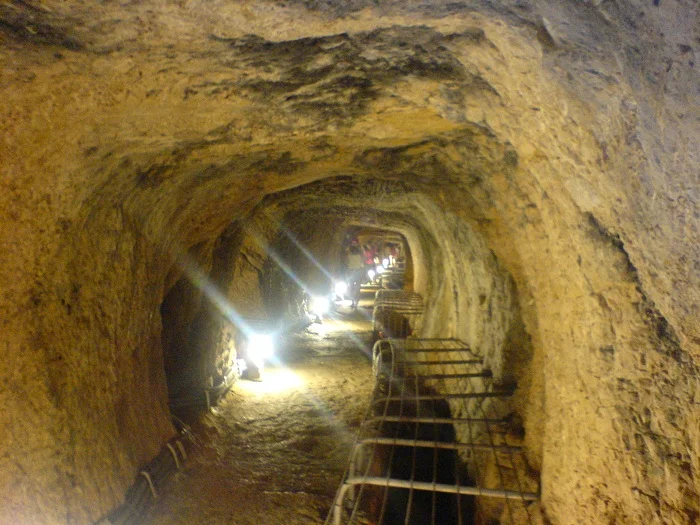The Eupalinos Tunnel is considered as one of the most important engineering achievements of antiquity. It's a 1036m long tunnel in Samos Island, Greece, built in the 6th century BC to serve as an aqueduct and therefore supply fresh water from Agiades spring the city of Samos (Pythagoreion). The Eupalinos Tunnel is an engineering feat of outstanding importance since it was the first time in the history of mankind that anyone had ventured to undertake a project of that magnitude with no similar reference.
The Engineer Eupalinos built a tunnel under a mountain by starting to dig, simultaneously, from two portals diametrically opposite. All applied measurements using maths and geometry are of outstanding precision. Moreover, all evidence indicate that Eupalinos was ready to apply a solution for every difficulty that arose, due to unfavorable ground conditions that were partly encountered, as well as that he had the courage to bring his highly difficult project to a successful end. Eupalinos worked as a modern engineer 2500 year ago.
image: Hercules Milas
The Eupalinos Tunnel was used for over 1100 years (up to the 7th century AD) until it was abandoned in the Byzantine period, during which it was used for long periods by the Samians as a refuge. The tunnel offered unique protection for the people against pirate invasions. Fortressing walls were built inside the tunnel just after its south entrance portal.
Herodotus (481-425 B.C.) is the first historian who makes an enthusiastic reference to the monument. He names Eupalinos, son of Naustrophus, born in the city of Megara as the engineer responsible for designing and building the ancient project. He also describes the method of construction that makes this monument unique:
“…One is a tunnel, under a hill one hundred and fifty fathoms high, carried entirely through the base of the hill; its excavation started from two portals…”.
It is the first tunnel known that has been built under a mountain starting to excavate it from two diametrically opposite portals using mathematics and geometry for keeping it aligned.
The monument is a milestone in tunnel engineering since the engineer of that time think innovatively and deviated from the classical, for that period, method of tunnel construction (the qanat method). Eupalinos used mathematics and geometry not only to align the excavations before they met, but also to “manipulate” the alignment of the tunnel in order to avoid adverse geological conditions. Mutatis mutandis, the basic principle behind the method of Eupalinos, has been used again long after the Renaissance of Europe (early 18th century), and it is still in use in modern tunnelling.
Topographic imaging of Eupalinos Tunnel
The Eupalinos Tunnel is part of the Pythagoreion archaeological site, an UNESCO World Heritage Site since 1992.
The site can now be visited in its entirety and together with the Pythagoreion and Heraion offer one of the most rewarding travel experiences in Greece and on Samos.
Technical details of the tunnel here.












